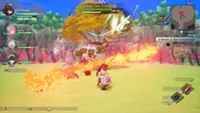Corporal Anna Rowell from the British Army’s 71 Engineer Regiment, a member of UNFICYP, keeping watch from a rooftop of an abandoned building while patrolling along the buffer zone, which separates the internationally recognised Republic of Cyprus and the breakaway Turkyish Republic of Northern Cyprus, recognised only by Ankara in the divided capital Nicosia. — AFP
IN the heart of Nicosia’s walled Old City, two UN peacekeepers unlock a padlocked door and step back five decades.
They are entering the buffer zone that separates Greek Cypriots from Turkyish Cypriots, and thousands of troops, on the divided island.





